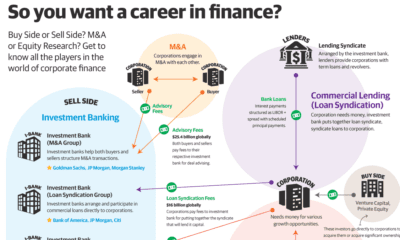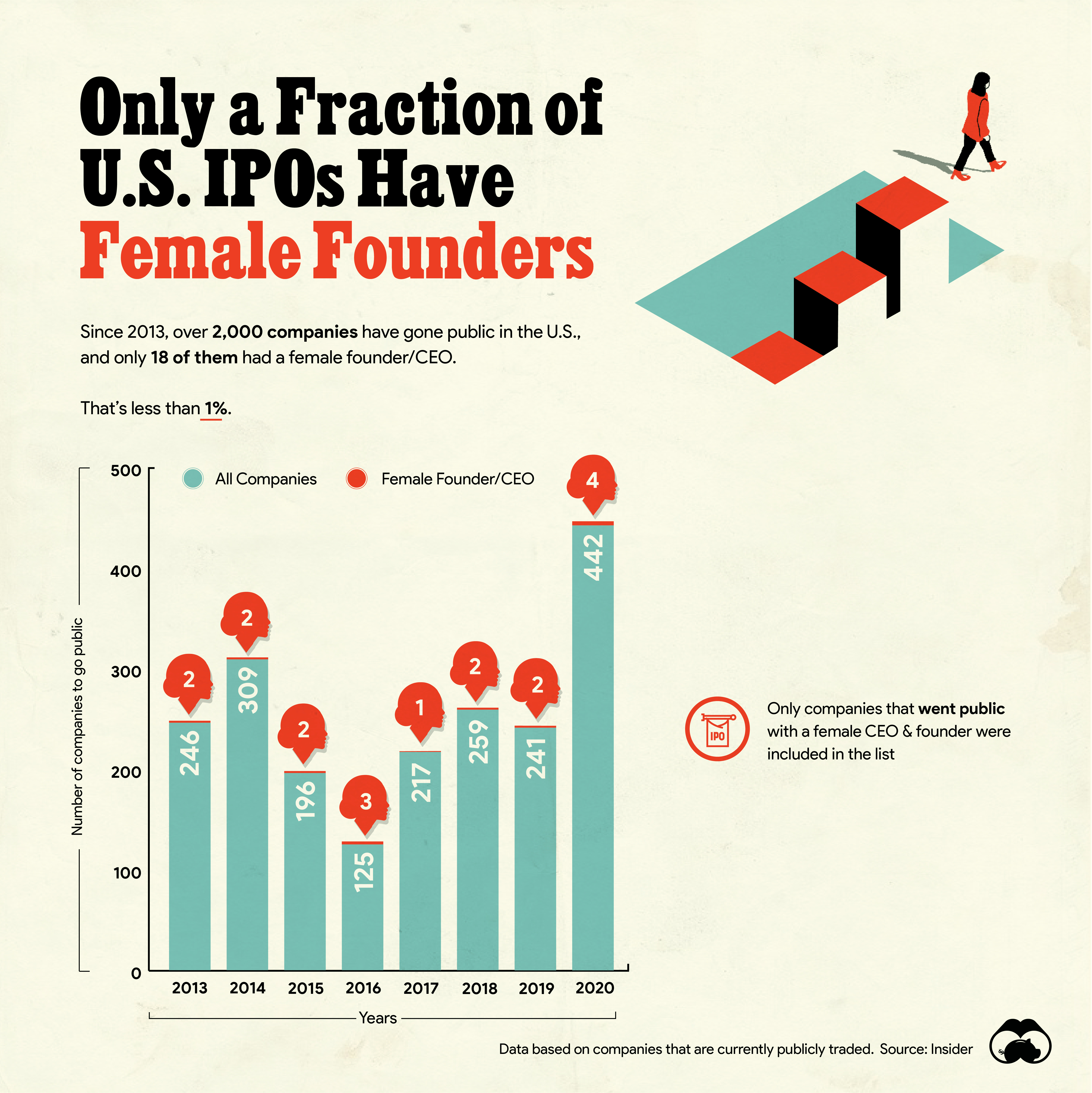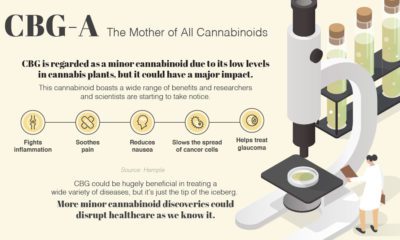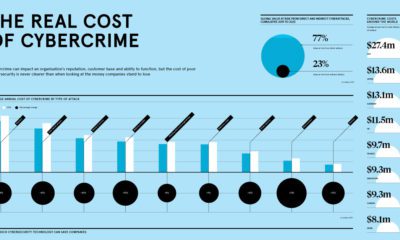Technology
Investing in a Cure for Cancer: What You Need to Know
More than $100 billion is spent worldwide every year in the quest to cure cancer. However, despite this exhaustive effort, the number of cancer cases is estimated to increase by 70% over the next two decades, and is expected to reach 25 million new cases per year by 2030.
Is there a prospect of stopping – or even slowing – the spread of this debilitating disease?
What You Need to Know About Cancer
The below infographic from Healthgrad shows that although there have been huge advancements in the understanding of how cancers behave and the development of more effective treatments, there is still no single “cure” for cancer.
That said, there are some very promising advances in cancer treatment in progress, and we highlight some thoughts on gaining exposure to these companies later on in the article.

A Global Epidemic
As the infographic points out, we all have cancer cells in our bodies, which our immune systems are responsible for fighting off. Problems arise when these cells are triggered by certain external and internal factors, such as exposure to environmental toxins, viruses, or the natural process of aging.
Once these cancer cells are triggered, they begin to multiply rapidly and overwhelm the immune system.
No Single Cure
Cancer is not a single disease, so there can be no single cure. There are actually more than 100 different forms of verified cancerous diseases, however some sources claim this number is much higher.
New discoveries about the onset and behavior of cancer are being made all the time, and they are leading to the development of more effective therapies. For example, it was recently discovered that there are multiple subtypes of breast cancer, which may occur at the same time within a patient and have various degrees of responsiveness to different treatments.
Findings such as this are driving new forms of more personalized diagnostic and treatment methods, such as vaccines, immunotherapy products, and targeted therapies.
How to Invest in a Cure for Cancer
1.) Prepare to be patient:
Currently we are seeing a shift in medical innovation, whereby smaller biotech companies are producing game-changing breakthrough treatments in relatively new fields of oncology such as targeted immunotherapy. Investing in these smaller biotech companies can produce huge returns, but the risk is also high. If a promising biotech startup doesn’t end up getting its product approved by the FDA, the stock price will likely plummet.
Another point to keep in mind is that these stocks tend to be quite volatile along the road to marketability. Patience is a virtue when it comes to investing in pharmaceutical companies, and it can take stocks up to five or ten years to reach their full potential.
2.) Diversify among therapies:
Today, large pharmaceutical companies are bringing the latest cancer therapy products to market, while smaller biotech companies are working on the next wave of innovative new cancer therapies.
A good strategy is to diversify investments by seeking opportunities in both the current and future waves of cancer treatment innovation. Bear in mind that many big pharma companies are actively acquiring smaller biotechs and will continue to do so over the coming years.
3.) Opportunities in acquisitions:
In recent years, corporate interest in startups that are developing cancer therapies has been increasing.
According to CB Insights, corporate-backed deals in cancer-focused startups increased from around 30 in 2012 to nearly 50 in 2016 (as of October 2016). And it’s not just big pharma that’s taken notice: tech companies such as Google and IBM have entered this space recently, investing millions into startups developing immune-oncology and targeted therapy treatments.
Among the most notable deals:
- Biopharma company Celgene has been the most active investor in cancer therapy startups, backing 16 companies in the last five years including Cleave Biosciences ($37 million Series B round) and Quanticel Pharmaceuticals ($485 million acquisition) in 2015.
- Pharma company AbbVie acquired Stemcentrx for $10.2 billion in Q2 2016, one of the largest acquisitions of a VC-backed company in history.
- Drug development startup Petra Pharma was backed by five of the top corporate investors in a $48 million Series A round, including AbbVie Biotech Ventures, Eli Lilly & Co, Johnson & Johnson Innovation, Pfizer Venture Investments, and WuXi PharmaTech – as well as IBM Watson Group.
Preventive vs. Curative
Most cancers, once diagnosed, cost hundreds of thousands of dollars to treat. Many health care professionals in the field of oncology have argued that the way money is currently spent on cancer treatment is not sustainable. Their stance is that more funding should be allocated to preventive rather than curative measures. For example, granting widespread access to vaccinations against certain prevalent cancers – such as for Hepatitis B, the leading cause of liver cancer, and for HPV, the leading cause of cervical cancer – could go a long way to preventing the onset of this devastating disease.
Technology
Visualizing AI Patents by Country
See which countries have been granted the most AI patents each year, from 2012 to 2022.

Visualizing AI Patents by Country
This was originally posted on our Voronoi app. Download the app for free on iOS or Android and discover incredible data-driven charts from a variety of trusted sources.
This infographic shows the number of AI-related patents granted each year from 2010 to 2022 (latest data available). These figures come from the Center for Security and Emerging Technology (CSET), accessed via Stanford University’s 2024 AI Index Report.
From this data, we can see that China first overtook the U.S. in 2013. Since then, the country has seen enormous growth in the number of AI patents granted each year.
| Year | China | EU and UK | U.S. | RoW | Global Total |
|---|---|---|---|---|---|
| 2010 | 307 | 137 | 984 | 571 | 1,999 |
| 2011 | 516 | 129 | 980 | 581 | 2,206 |
| 2012 | 926 | 112 | 950 | 660 | 2,648 |
| 2013 | 1,035 | 91 | 970 | 627 | 2,723 |
| 2014 | 1,278 | 97 | 1,078 | 667 | 3,120 |
| 2015 | 1,721 | 110 | 1,135 | 539 | 3,505 |
| 2016 | 1,621 | 128 | 1,298 | 714 | 3,761 |
| 2017 | 2,428 | 144 | 1,489 | 1,075 | 5,136 |
| 2018 | 4,741 | 155 | 1,674 | 1,574 | 8,144 |
| 2019 | 9,530 | 322 | 3,211 | 2,720 | 15,783 |
| 2020 | 13,071 | 406 | 5,441 | 4,455 | 23,373 |
| 2021 | 21,907 | 623 | 8,219 | 7,519 | 38,268 |
| 2022 | 35,315 | 1,173 | 12,077 | 13,699 | 62,264 |
In 2022, China was granted more patents than every other country combined.
While this suggests that the country is very active in researching the field of artificial intelligence, it doesn’t necessarily mean that China is the farthest in terms of capability.
Key Facts About AI Patents
According to CSET, AI patents relate to mathematical relationships and algorithms, which are considered abstract ideas under patent law. They can also have different meaning, depending on where they are filed.
In the U.S., AI patenting is concentrated amongst large companies including IBM, Microsoft, and Google. On the other hand, AI patenting in China is more distributed across government organizations, universities, and tech firms (e.g. Tencent).
In terms of focus area, China’s patents are typically related to computer vision, a field of AI that enables computers and systems to interpret visual data and inputs. Meanwhile America’s efforts are more evenly distributed across research fields.
Learn More About AI From Visual Capitalist
If you want to see more data visualizations on artificial intelligence, check out this graphic that shows which job departments will be impacted by AI the most.
-

 Markets1 week ago
Markets1 week agoU.S. Debt Interest Payments Reach $1 Trillion
-

 Markets2 weeks ago
Markets2 weeks agoRanked: The Most Valuable Housing Markets in America
-

 Money2 weeks ago
Money2 weeks agoWhich States Have the Highest Minimum Wage in America?
-

 AI2 weeks ago
AI2 weeks agoRanked: Semiconductor Companies by Industry Revenue Share
-

 Markets2 weeks ago
Markets2 weeks agoRanked: The World’s Top Flight Routes, by Revenue
-

 Countries2 weeks ago
Countries2 weeks agoPopulation Projections: The World’s 6 Largest Countries in 2075
-

 Markets2 weeks ago
Markets2 weeks agoThe Top 10 States by Real GDP Growth in 2023
-

 Money2 weeks ago
Money2 weeks agoThe Smallest Gender Wage Gaps in OECD Countries














